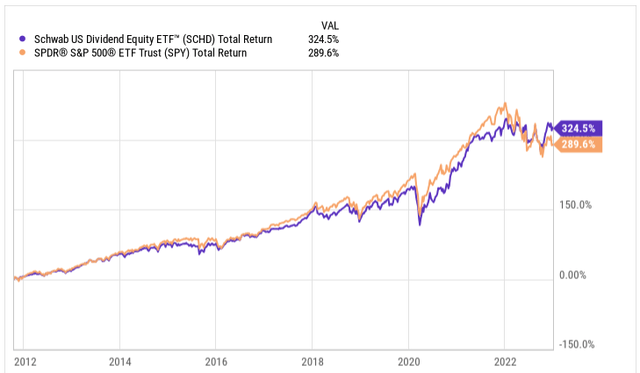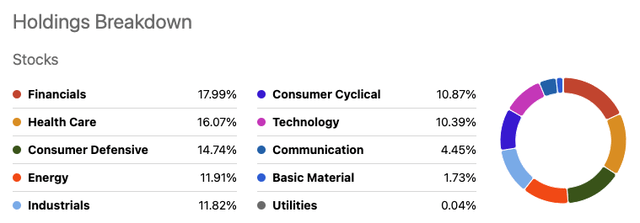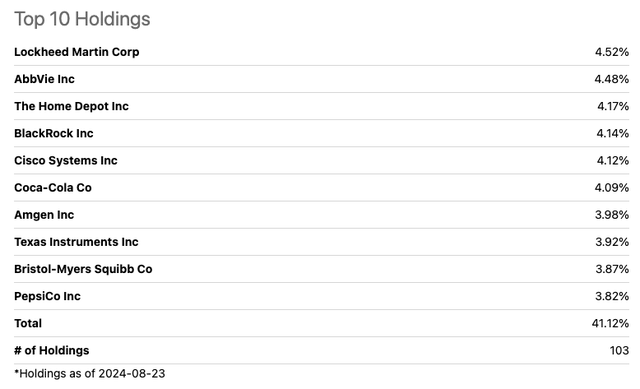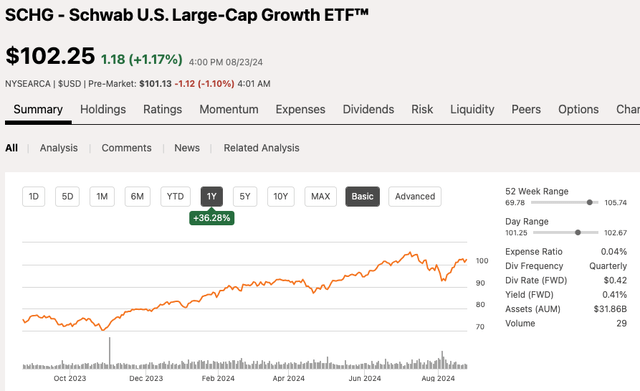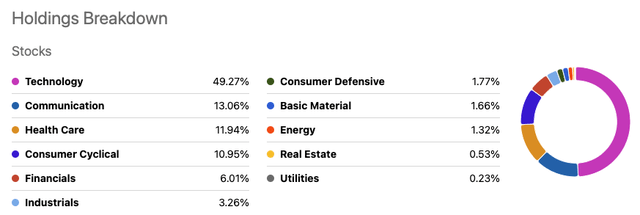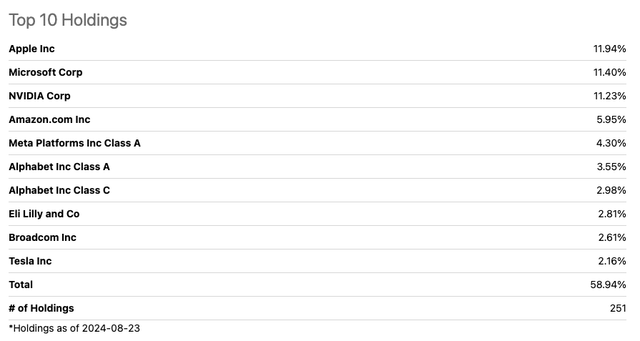BrianAJackson
Many of my readers love to invest in ETFs and as you may know, I’m a big fan of them too.
A few months ago, my team and I launched our first ETF, the iREIT – MarketVector Quality REIT Index ETF (IRET), the only fundamental-driven REIT ETF Index designed to screen for quality and value.
Having been a writer on Seeking Alpha for over 14 years, I recognize that many investors own ETFs because they don’t have the time to research stocks, and this has led us to incorporate ETF research into our research platform.
So today, I decided to highlight two of the most popular ETFs that have just under $100 Billion in Assets Under Management (combined). I look forward to your comments and/or questions below.
ETF #1 = Schwab U.S. Dividend Equity ETF (SCHD)
The Schwab US Dividend Equity ETF, otherwise known as SCHD, has been a favorite among dividend investors for some time, and for good reason. Prior to the AI boom that really took off in 2023, SCHD was an ETF that over the decade prior was outperforming the S&P 500 (SPY).
As you can see from the chart below, SCHD provided a total return of 262% compared to the S&P 500 returning 224% during that same 10-year period.
Do you want to go out a little further?
Ok, how about another 5 years added on, and you can see the same result, SCHD outperforming the S&P 500.
SCHD has proven to be a well-rounded ETF, that is well-diversified and when various sectors work, this investment works.
However, the past few years have not been about everything working, it has been about mega cap technology and communication services working.
The problem with that when it pertains to SCHD is the fact that those are two of the sectors within the portfolio with the least amount of exposure.
As you can see above, Technology accounts for barely 10% of the ETF and communication services accounts for less than 5% of the ETF. The largest sectors are Financials, Health Care, Consumer Staples, Energy and Industrials.
This translates into the following top holdings:
A lot of great names on this list, but plenty that have also run into growth issues in the past year or so, which include the likes of Home Depot (HD), Cisco Systems (CSCO), Bristol Myers Squibb (BMY), and others.
Long-term, the algorithm has proven itself to invest in high-quality dividend paying stocks, and that’s exactly what it has done. On top of that, you get to enjoy a nice sized dividend and a growing dividend at that.
SCHD currently yields a dividend of 3.4% to go along with a 5-year dividend growth rate of 13% and 12 consecutive years of dividend growth.
SCHD is a sound investment, with a solid dividend, and makes for a great compliment to any tech-heavy investments you may have.
ETF # 2 – Schwab U.S. Large-Cap Growth ETF (SCHG)
Let’s go with another Schwab ETF, the sister fund of SCHD, which is the Schwab US Large Cap Growth ETF.
- SCHD is geared more towards dividends.
- SCHG geared more towards growth.
Investing in both, you get the best of both worlds, as they complement each other greatly. When the larger cap growth stocks are leading the charge, like they have the past 20 months, SCHG will pull its weight. When things are settled and broader, SCHD will lead the charge.
Over the past 12 months, shares of SCHG are up over 35% and the ETF currently has an AUM of $31.9 billion.
When it comes to tech-heavy ETFs, QQQ is usually the most popular.
SCHG has a lot of similarities with the popular Invesco QQQ ETF (QQQ), as it is heavy technology and communication services, but an expense ratio 80% lower than that of QQQ.
- QQQ has an expense ratio of 0.20%
- SCHG is at just 0.04%
QQQ is great if you are utilizing options, but if you aren’t, I would largely take a second look at SCHG because it can check off many of the same boxes.
Here is a look at sector breakdown for SCHG:
Very different from SCHD, as Technology makes up nearly half of the ETF and Communication Services the second largest with 13% exposure. Again, you can see why these two sibling funds can be a great compliment to one another.
Now let’s take a look at the top holdings:
The top 10 holdings account for nearly 60% of the fund and in total the fund has 251 positions, half that of the S&P 500, which is why you see much larger exposure rates to these large cap stocks.
If you are looking for growth and want higher exposure to these mega cap stocks, SCHG will be a great option for you to consider. Given the stocks at the top of the ETF, you can probably get a good idea that this ETF does not pay much in terms of a dividend. No one is investing in SCHG for a dividend, similar to QQQ.
If growth stocks continue to lead the charge in this market, SCHG will continue its upward climb, but if we see the other sectors start to close the wide gap, SCHD is going to perform well. You get broad exposure with both of these ETFs, which is why we believe they could be a great fit for you moving forward.
In Closing
I hope that you enjoyed reading this article, and I look forward to your comments below. Please let me know if you have any other ETF requests and our team will try our best to accommodate.
Happy SWAN Investing!
Author’s Note: Brad Thomas is a Wall Street writer, which means he’s not always right with his predictions or recommendations. Since that also applies to his grammar, please excuse any typos you may find. Also, this article is free: written and distributed to assist in research while providing a forum for second-level thinking.




